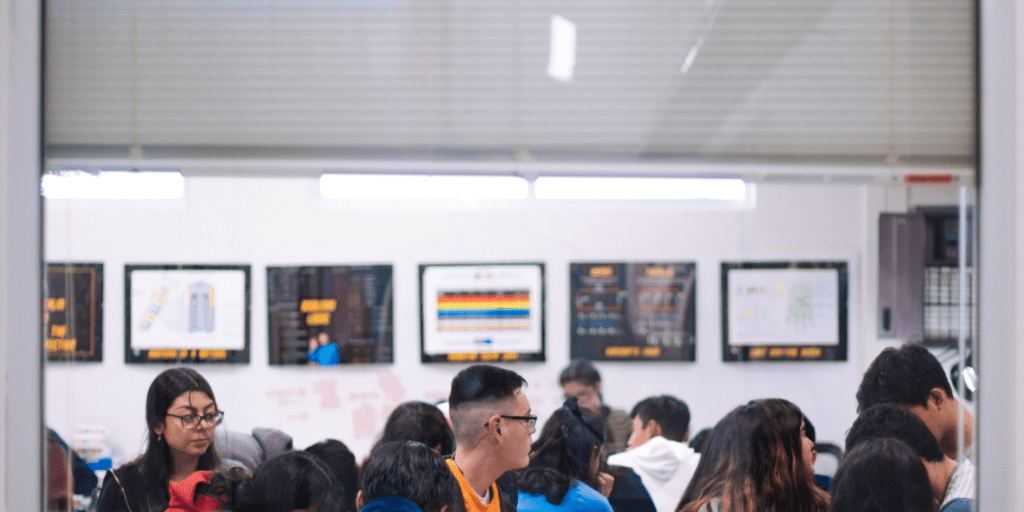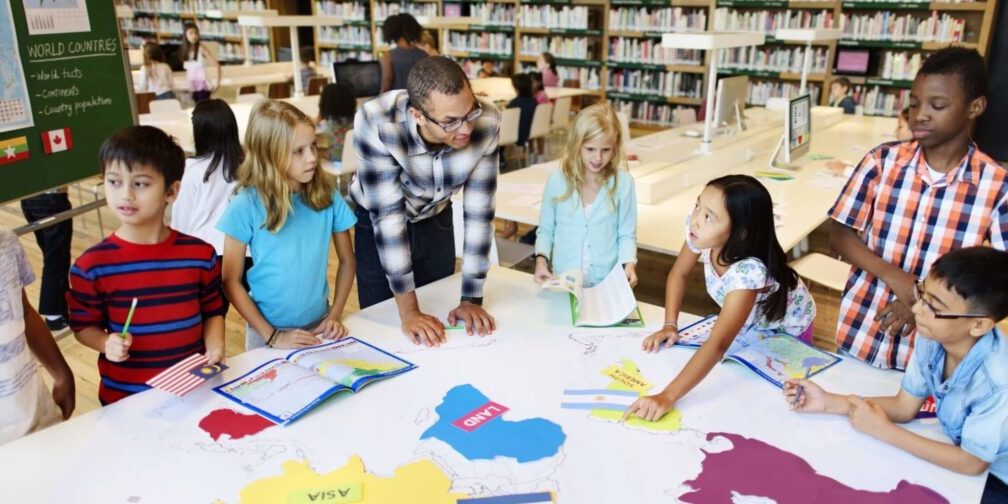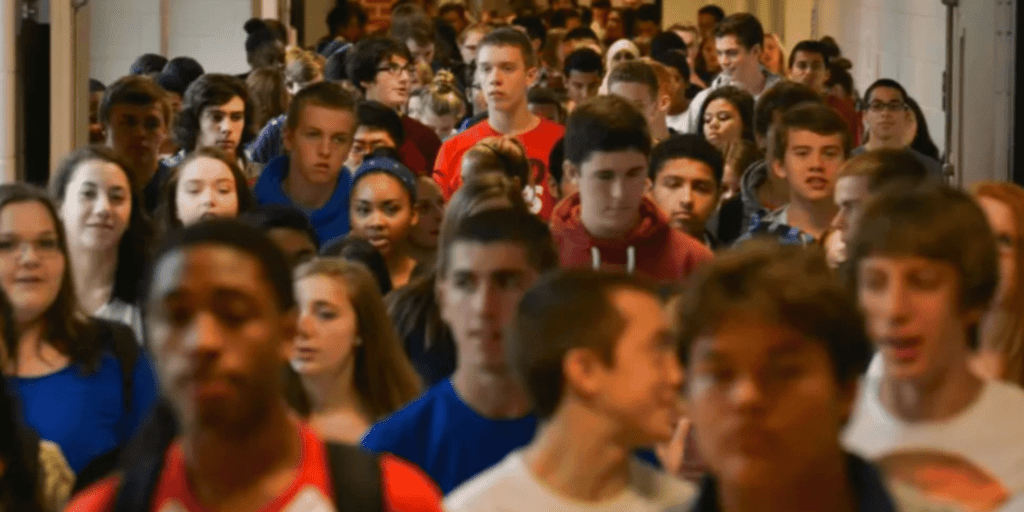Why Students Want Deeper Learning in STEM and How Teachers Can Help Them Achieve It
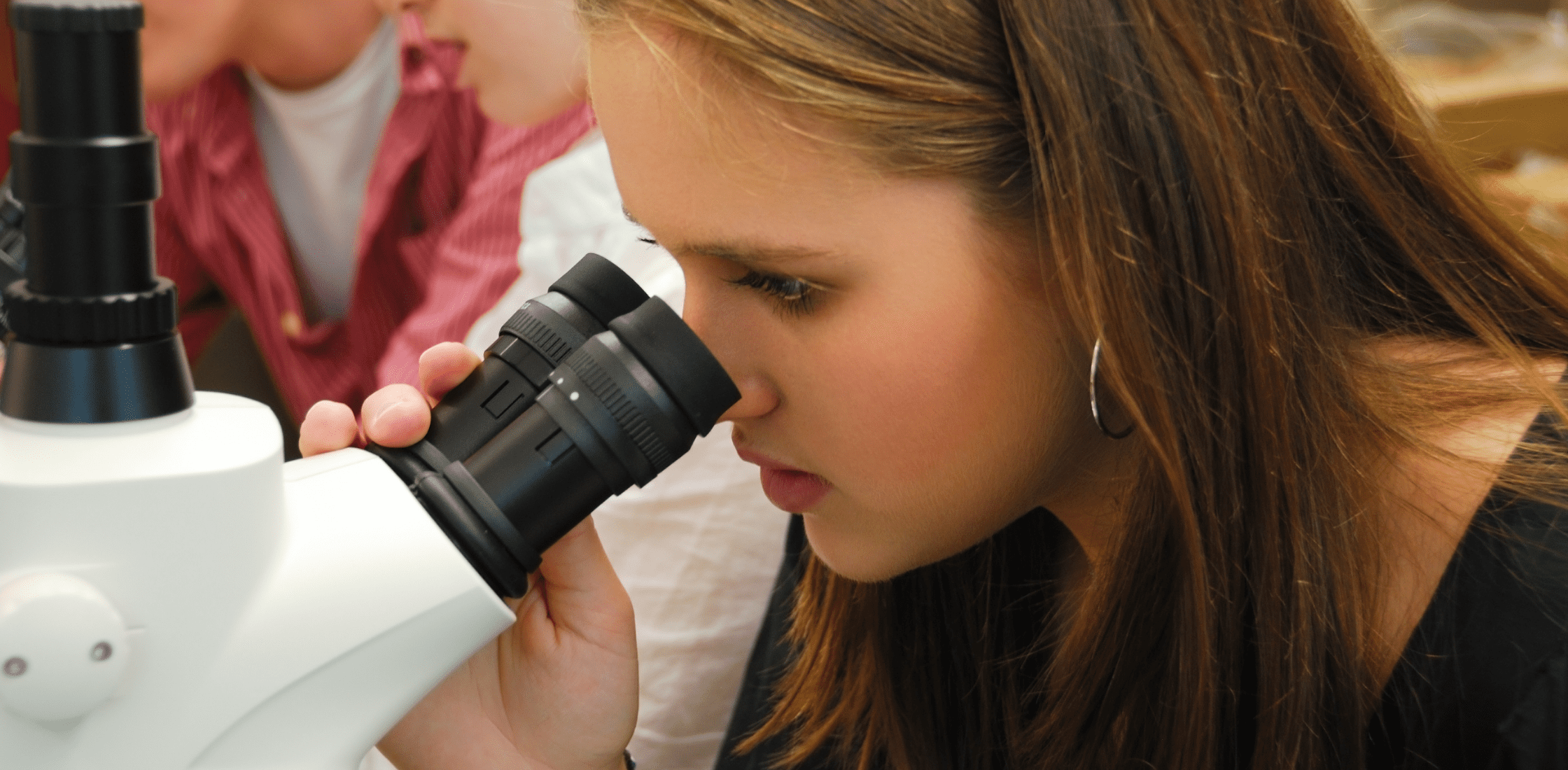
“Students emphasized, in both surveys and interviews, a loss of deep learning in STEM. In some cases, students noted that while they received good grades, they felt their understanding was much more superficial.” — The Impact of the COVID-19 Pandemic on Youth STEM Pathways
Deeper Learning in STEM – More Important Now Than Ever Before
In order for the US to remain competitive in the global community, schools will need to equip students with crucial technical skills to prepare them for jobs that don’t yet exist, at a time when innovation in STEM fields is accelerating exponentially. Today, it is not enough to learn. Students must master “deeper learning” to become innovative leaders in the future.
Deeper learning is the process of acquiring a combination of complex knowledge and advanced skills and knowing how to apply them to new contexts and situations. Unlike standard learning which merely teaches students facts and expects them to memorize static information, deeper learning teaches students how to “knowledge transfer” — identify what they know, apply the knowledge, and recognize how their understanding and the world evolves with the knowledge. Deeper learning is fluid and dynamic. And, most importantly, the primary purpose of deeper learning is to prepare students for the real world and real jobs.
Deeper learning has a significant impact on a child’s performance because it teaches them new ways of questioning the world around them and gives them powerful problem-solving tools. Research on the benefits of deeper learning on student learning outcomes points the way forward for educators seeking strategies on how to keep students engaged in STEM.
A study conducted by the American Institute for Research (The Study of Deeper Learning: Opportunities and Outcomes) found that “deep learning network schools” (20 high schools that focus heavily on deeper learning skills) reported that students had higher levels of academic engagement, motivation to learn, self-efficacy, and collaboration skills. Students also had higher state standardized assessment scores regardless of their background.
In 2019, fewer than 1 in 4 high school seniors and a little more than a third of 4th and 8th graders in the US performed proficiently in science (National Assessment of Educational Progress). With year-over-year declines in student proficiency in science, reversing this trend has become a national priority felt at every level but teachers, especially, are on the front lines of this struggle, and equipping them with new, innovative tools is crucial. The good news is, deeper learning is starting to gain traction in schools across the country.
The Deeper Learning Dozen: Superintendents on a Mission
How exactly does deeper learning empower teachers and students in science classrooms? And how can education leaders implement deeper learning throughout their districts effectively and equitably?
These are the questions that a dozen superintendents from across the United States and Canada are attempting to answer. The Deeper Learning Dozen (as their organization is called) was founded based on one core motivating question: “How do you build policies, systems, roles, and culture to create deeper learning equitably district-wide?” And, according to their mission statement, they “intend to learn from the collective experience of our districts and share with the field.”

Professor Jal Mehta (Harvard Graduate School of Education) founded The Deeper Learning Dozen based partially on his decade-long search for new instances of deeper learning in schools. In his book, “In Search of Deeper Learning: The Quest to Remake the American High School” (co-authored by Sarah Fine), Mehta emphasizes the role of teachers and activity-based curricula being key to facilitating deeper learning. In an interview with The Harvard Gazette, he explains the meaning and purpose of deeper learning:
“Deeper learning is the understanding of not just the surface features of a subject or discipline, but the underlying structures or ideas… We also say in our book that deeper learning tends to emerge at the intersection of mastery, identity, and creativity. Mastery is developing significant knowledge and skill; identity is seeing yourself as connected to doing the work; and creativity is not just taking in knowledge but doing something in the field. When those three elements come together, it often yields deep learning.” — Professor Jal Mehta
But, as Mehta also explains, implementing deeper learning is often complicated and challenging for even the most innovative schools with the best resources – and the results can be underwhelming based on several factors:
“There’s good news and bad news. The bad news was that in these schools, which had been recommended as places that did 21st-century learning or particularly rigorous forms of traditional learning, students still experienced a lot of unchallenging instruction; they were doing a lot of worksheets and tasks that were pretty low level, where they were expected to memorize content and apply algorithms rather than analyze, synthesize, and create. That was pretty disappointing because these schools were seen as places that were trying to break that mold. The good news was that there were spaces within almost every school where powerful learning was happening.” — Professor Jal Mehta
Despite the challenges, school districts across the country have been implementing deeper learning practices in STEM classrooms with measurable success for several years now. But are we still seeing steady improvement in student development through deeper learning?
Students Express Feeling a Significant Loss of Deeper Learning in STEM
Covid-19 has had a tremendous impact on deep learning. Deep learning centers on hands-on, collaborative learning (experiential learning) which was nearly impossible to do effectively with the closure of schools over the past two years. Since the start of the pandemic, there has been a steady stream of research on the impact of the pandemic and online learning on student learning outcomes. Research indicates a shockingly significant loss of learning and engagement, particularly in STEM subjects.
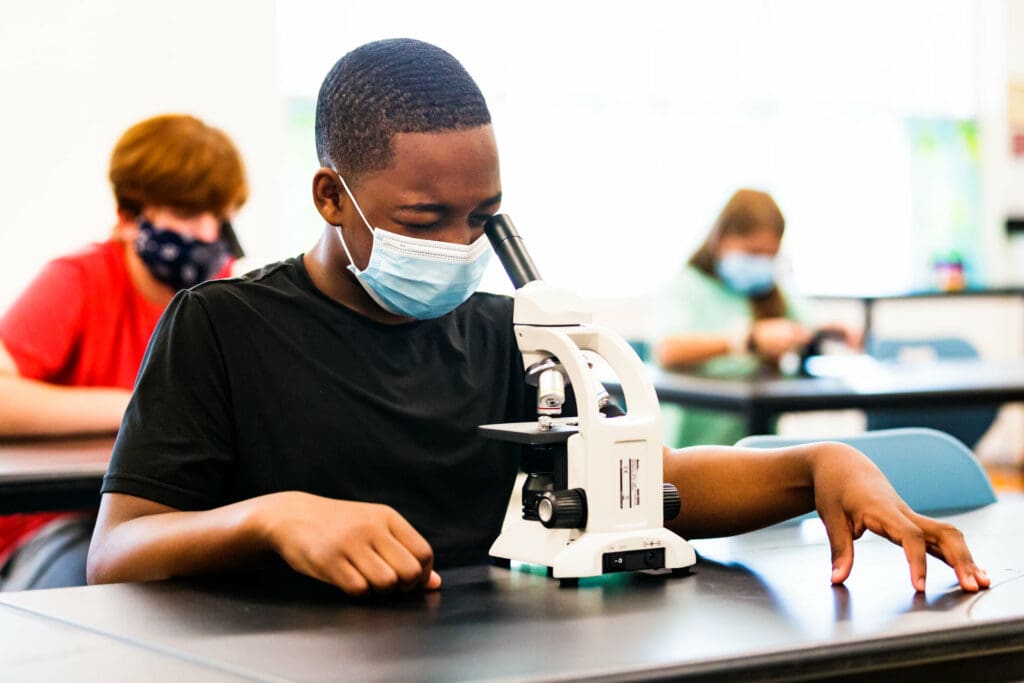
In a study recently published jointly by the American Museum of Natural History and SRI International (Supports and Challenges in an Educational Crisis: The Impact of the COVID-19 Pandemic on Youth STEM Pathways), researchers explored the impact of educational disruptions and loss of opportunities due to the pandemic on youth who are typically underrepresented in science. Nearly all students (85%) reported that the pandemic had a negative impact on their academic growth.
Students pointed to a loss of learning in three main areas that are crucial for deeper learning: foundational understanding of key concepts, peer collaboration, and building relationships. Students also reported a loss of learning due to not being able to engage in standard science practices such as asking and developing questions based on observations, planning and carrying out investigations, and analyzing data.
The key takeaway from this study is the fact that most students are very aware that they have experienced a substantial loss of deep learning during the pandemic, and they are not happy about it. They understand how important deeper learning is for their success in academics and the future workforce. The question is, how can schools help students to regain and maintain deeper learning skills in the complicated, post-pandemic world of hybrid learning?
Going Deeper with Deeper Learning in STEM
Since 2013, The Next Generation Science Standards (NGSS) have given schools a powerful set of tools and a roadmap for bringing deeper learning to all STEM students. The NGSS (based on the Framework K-12 Science Education and developed by a consortium of 26 states and multiple organizations including the National Science Teachers Association (NSTA)) is an effort to create new education standards that are “rich in content and practice, arranged in a coherent manner across disciplines and grades to provide all students an internationally benchmarked science education.” It’s a comprehensive guide to bringing deeper scientific learning to students and research on NGSS efficacy shows it works.
A study published by WestEd (Engaged and Learning Science: How Students Benefit from Next Generation Science Standards), explored the impact of a six-year program in California school districts called the NGSS Early Implementers Initiative for diverse students in grades K-2, 3-5, and 6-8. The results found that students became:
- More excited about and engaged in science;
- Experienced more inclusive participation; and
- Showed evidence of higher-level learning (deeper learning)
Part of the reason why the NGSS is so effective at fostering deeper learning is that it is multidisciplinary and multidimensional (it’s dynamic in every way). It has three dimensions that are integrated into all instructions at all levels (content core ideas, science and engineering practices, and crosscutting concepts). Crosscutting concepts are the heartbeat of deeper learning:
“Crosscutting Concepts help students explore connections across the four domains of science, including Physical Science, Life Science, Earth and Space Science, and Engineering Design. When these concepts, such as “cause and effect”, are made explicit for students, they can help students develop a coherent and scientifically-based view of the world around them.” — Next Generation Science Standards
If you are a teacher seeking to bring deeper learning into your science classroom, the first question you should ask is whether your current curriculum sufficiently stimulates students’ critical thinking including asking questions and problem-solving. The NGSS offers great tools on its website to help teachers evaluate and assess their current curriculum. But ultimately, adopting an NGSS-aligned curriculum is critical to achieving deeper learning with STEM students. As of December 2021, over 20 states, plus the District of Columbia, have adopted the NGSS as their state science standards and more states are adopting NGSS every year.
Our NGSS-aligned curricula have been implemented in schools across the country for years and offer teachers and students the tools and support to create learning experiences that foster creativity, curiosity, and real-world scientific investigation.
To learn how curricula should be correctly aligned with NGSS, explore a few of our popular solutions including:
- IQWST® for middle school students
- OpenSciEd Interactive Digital Edition for middle school students
- Activate Learning PRIME™ for K-5 students
Armed with these tools, teachers will not only be empowered to give students the engagement they need, they will be able to go even deeper with deeper learning than ever before!
As STEM innovation accelerates and new, unprecedented global issues of urgency emerge, it is vital that we develop a skilled workforce capable of solving complex problems across multiple domains (and quickly!) to remain competitive globally. In order for students to deeply understand and solve the problems they’ll face when they enter the workforce, they must also become versed in emerging interconnected STEM subjects that aren’t currently taught in standard K-12 STEM classes. Bioinformatics, for example, is a branch of computer science that mixes mathematics, data science, and biology to solve biological problems. It entails the creation of software tools and algorithms for the analysis and interpretation of biological data.
In the future workforce, students will address food shortages, housing shortages, cloning, climate change, cyberwarfare, biotech, neurotech (computer-brain interface devices), ethical issues from gene editing (CRISPR), and a myriad of other issues on the horizon in STEM fields. Are students being prepared for this strange new world they’ll be entering (one very different from ours today) in just a few years? Science teachers are at the forefront of preparing students for the brave new world.
In the coming months on this blog and at our events, we will be offering insights, tools, and strategies on how teachers can offer deeper learning that will prepare students to be STEM leaders in a post-pandemic society. Topics we will explore include:
- Emerging Science (the frontier of new science and near-future innovations)
- Experiential Learning (the evolution of learning by doing and “hands-on” learning)
- The Intersection of Science and Technology (how emerging technologies impact science earning and STEM fields)
- Science Communication
- STEM Jobs of the Future
- STEM Ethics
- STEM Entrepreneurship
- Students finding purpose and meaning through STEM
- Neuroscience and biotech
- Achieving UN’s 2030 Sustainable Development Goals
To Empower Students in STEM, Start Here
If you haven’t already begun the process of implementing deeper learning, reading this post is a great first step.
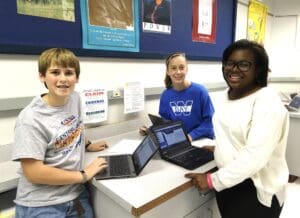
Following research-based techniques and principles for enhancing deeper science learning is key. Science curriculum should be NGSS-aligned and include a variety of representations for concepts and tasks — encouraging self-explanation, elaboration, and questioning. Engage students in difficult tasks while providing them with supporting assistance and feedback. Create an environment of open dialogue and group discussions.
Your science curriculum should also offer flexibility and have a dynamic and engaging online experience for both teachers and students. Students should be able to keep track of their observations and reasoning, and teachers should be able to easily provide feedback (like they can with our AI-powered Assignments & Student Dashboard).
Above it can’t be overstated that one of the best ways to encourage deeper learning in science with students is to empower them to embrace mistakes and failure as a necessary part of the discovery and learning process. Once again, well-designed, NGSS-aligned curricula will have this factor built into the learning process organically. For examples of this process, take a look at our curricula noted above.
Now is the time to move forward boldly — to go farther, faster, and deeper in STEM learning than we ever imagined. The good news is, based on the research we cited above, students want to go on this journey. They are ready. And so are we!


